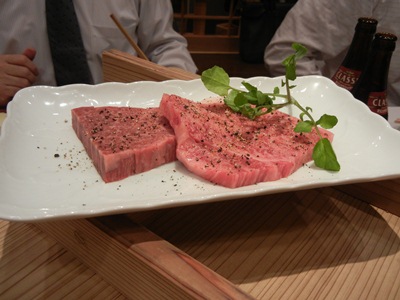
The first farm we visited was Kishikawa, a farm which has 90 cows. What impressed me was that the farm maintains a self-sufficient system of providing top quality rice straw for their Japanese kuroge (black-haired) wagyu cattle: the property is surrounded by rice paddies, where the prized Saga rice is grown. After the rice is harvested, the remaining rice straw is used as feed for the cattle. This practice is unique because in other prefectures, farmers import their rice straw for cattle feed.
The rice straw, which is a healthy ingredient that promotes good offal conditions in the cattle, forms the basis of the feed. Corn and barley flakes (which build marbling and tender fat) and yeast deposits of beer (which help to improve appetite) also form part of the ration.
Saga rice, which was served in eateries everywhere we went, was awesome. It was especially fragrant and flavourful, and it has a cleaner bite when compared to the famous Akita rice. Unlike Akita’s produce, Saga rice is rarely exported as it’s a strictly controlled item for domestic consumption.
The second wagyu farm I visited was Nakayama. It took us two hours by car to reach the property from the centre of town: along the way, we passed by a scenic route of seaside cliffs, lush pastures and the prefecture’s beautiful pine forests. With a 2150-strong herd, Nakayama was a big farm, but its appearance was plain and simple; quite far from the romanticised countryside image I had thought it would exude. It also had a small storefront and a café, where people could stop by on their drive-by to purchase wagyu cuts. The farm has no defined limit on how old the cattle should be before they are slaughtered (the farmers will do so when they think the cows are big enough), but most export cattle is slaughtered at 20 months.
Excerpt from the August issue of epicure.
